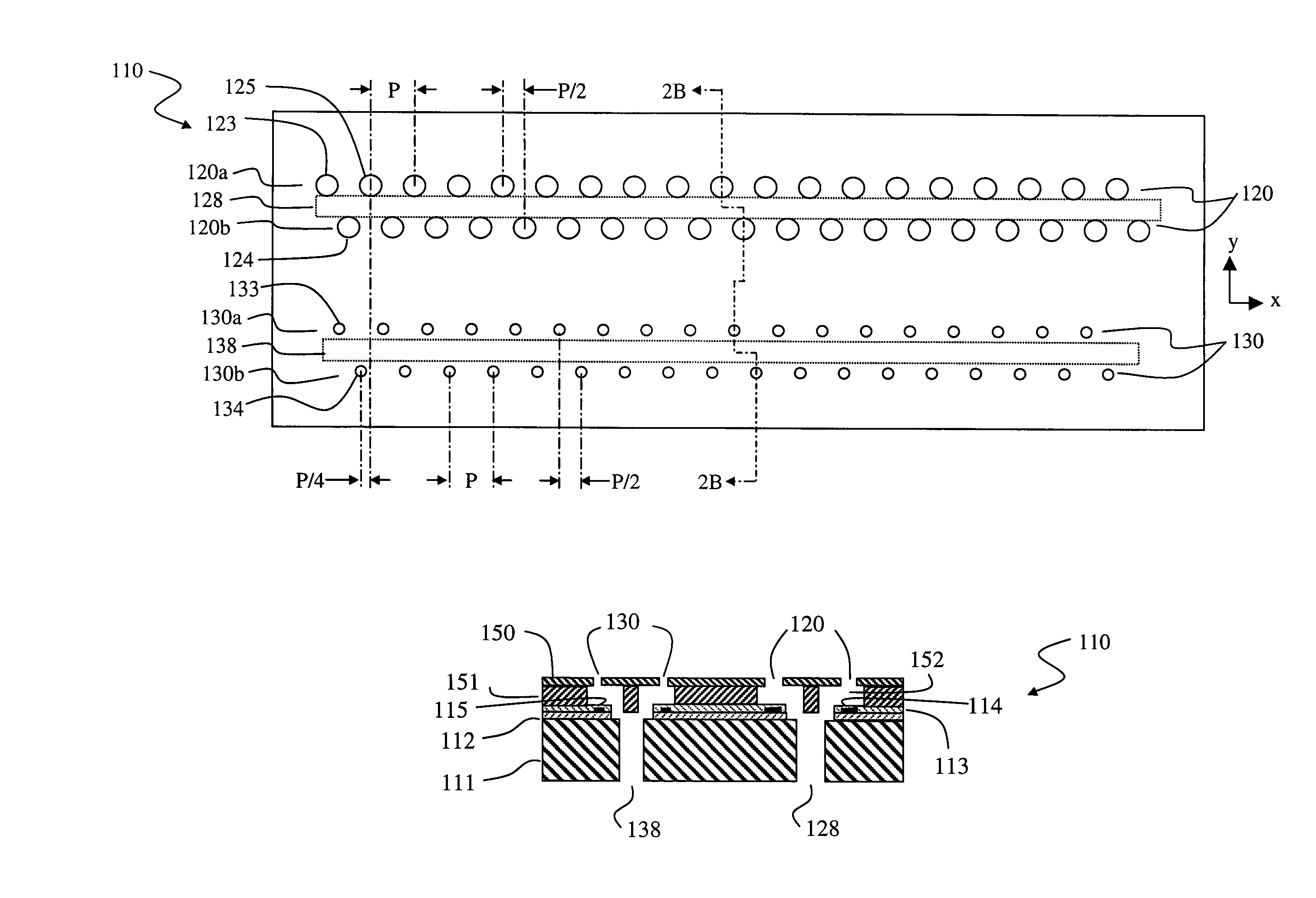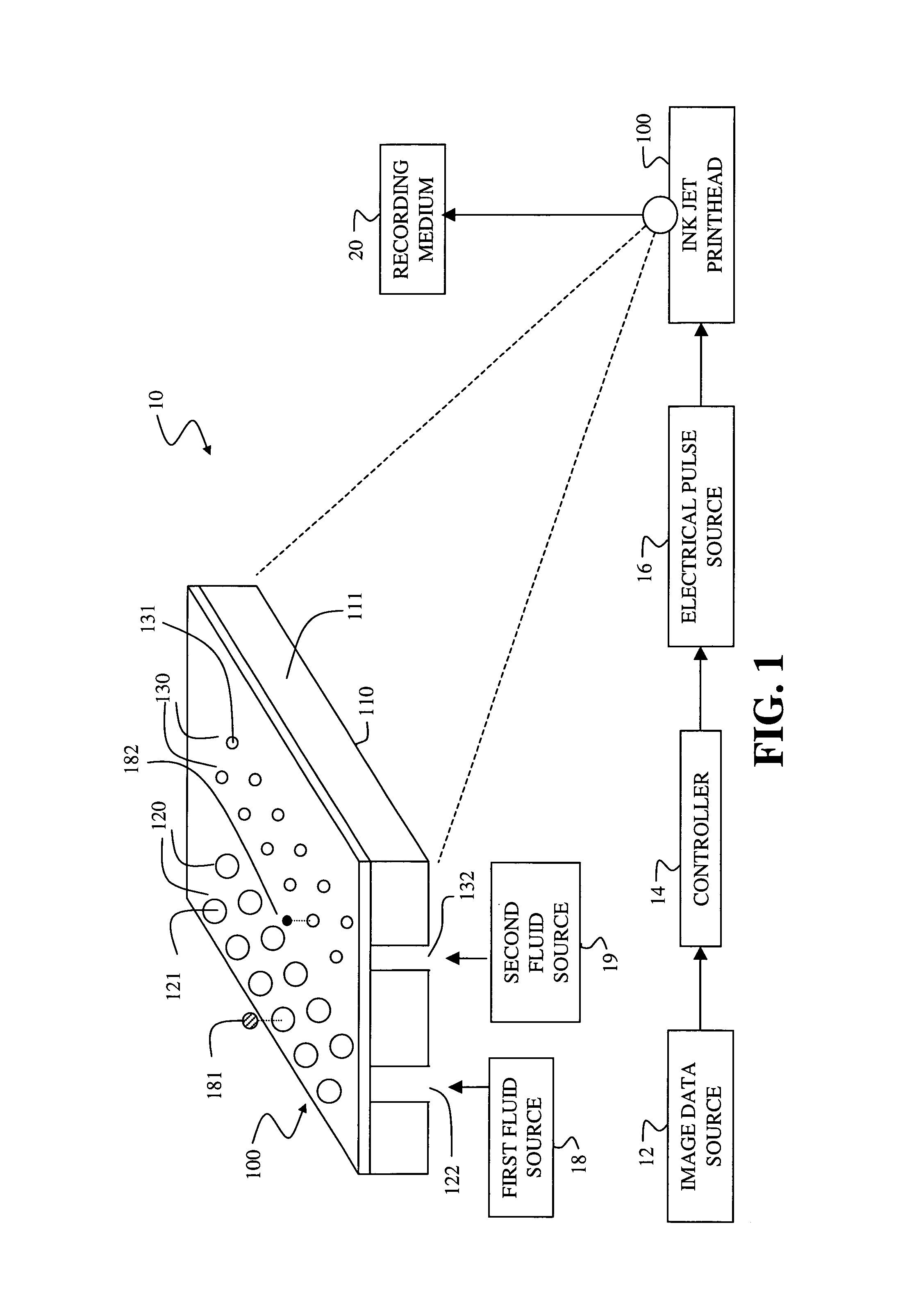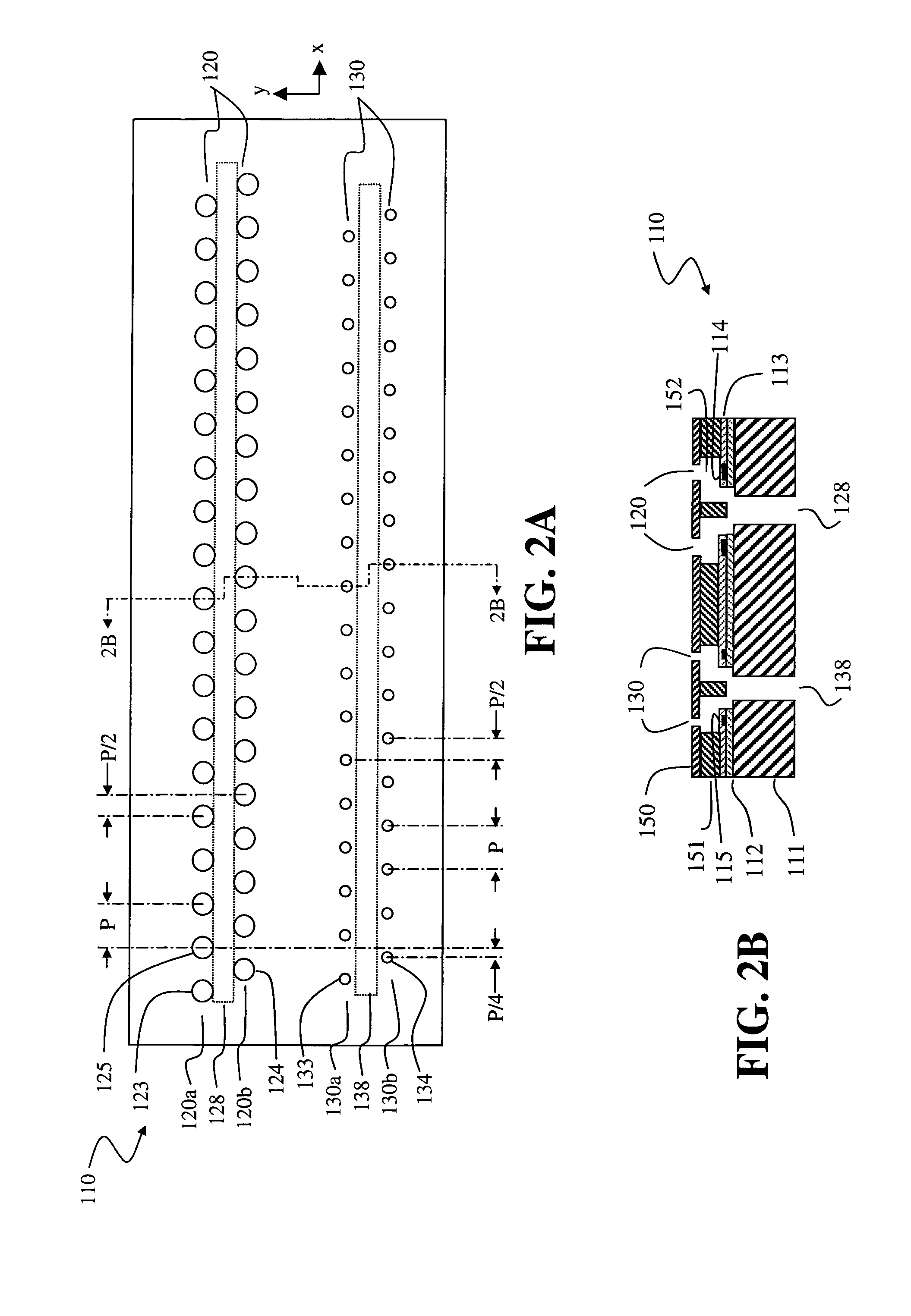Fluid ejection device nozzle array configuration
a technology of nozzle array and ejection device, which is applied in the direction of printing and inking apparatus, etc., can solve the problems of prohibitively expensive, too large die size, and inability to make high-quality printing arrays which are comprised of a single di
- Summary
- Abstract
- Description
- Claims
- Application Information
AI Technical Summary
Benefits of technology
Problems solved by technology
Method used
Image
Examples
first embodiment
[0036]FIG. 2 shows a fluid ejection device 110 of this invention. Fluid delivery slots 128 and 138 are formed through substrate 111. The fluid delivery slots extend along the length of the substrate in the x direction, each slot thereby forming a channel to supply fluid to the nozzles arranged along its respective length. Nozzle array 120 is composed of two groups of nozzles. Nozzle group 120a is arranged along one side of fluid delivery slot 128 and nozzle group 120b is arranged along the other side of slot 128. Nozzle groups 130a and 130b are similarly arranged with respect to fluid delivery slot 138. Nozzle array 120 is spaced apart from nozzle array 130 in the y direction. Nozzles in each subgroup are shown as being arranged in a straight line in the x direction. In some applications, adjacent nozzles within each subgroup may be designed with a slight offset in the y direction, for example arranged in a sawtooth pattern. Generally speaking, the nozzles are arranged along the flu...
second embodiment
[0041]FIG. 3 shows a fluid ejection device 116 of this invention. In this embodiment the fluid pathway for nozzle array 120 goes around a long edge of the substrate, leading to channel 129 which extends along the x direction and supplies fluid to the array. Nozzles in array 120 are spaced at pitch P along one side of channel 129. The nozzles in array 130 are arranged similarly with respect to fluid channel 139 which is on the opposite long edge of the substrate. Nozzles in array 130 are spaced at pitch P and are also offset in the x direction from corresponding nozzles in array 120 by a distance P / 2. Thus, from left to right, the nozzles in the fluid ejection device alternate between nozzles of larger opening area from array 120 and nozzles of smaller opening area from array 130. The distance along x between two successive nozzles on fluid ejection device 110 is P / 2.
third embodiment
[0042]FIG. 4 shows a fluid ejection device 117 of this invention. In this embodiment, nozzles in the first array 120 are supplied with fluid around the edge of the substrate, as in FIG. 3, while nozzles in the second array 130 are supplied with fluid from a slot in the substrate, as in FIG. 2. Nozzles in array 120 are spaced at pitch P along one side of channel 129. Nozzle array 130 is composed of two groups of nozzles. Nozzle group 130a is arranged along one side of fluid delivery slot 138 and nozzle group 130b is arranged along the other side of slot 138. Both nozzle groups 130a and 130b are arranged at pitch P, with nozzles in group 130a offset along the x direction from nozzles in group 130b by a distance P / 2. In the configuration shown in FIG. 4, there is zero offset in the x direction between nozzles in array 120 and nozzles in group 130a, while there is an offset of P / 2 between nozzles in array 120 and nozzles in group 130b. Alternatively (not shown), there could be a nonzero...
PUM
 Login to View More
Login to View More Abstract
Description
Claims
Application Information
 Login to View More
Login to View More - R&D
- Intellectual Property
- Life Sciences
- Materials
- Tech Scout
- Unparalleled Data Quality
- Higher Quality Content
- 60% Fewer Hallucinations
Browse by: Latest US Patents, China's latest patents, Technical Efficacy Thesaurus, Application Domain, Technology Topic, Popular Technical Reports.
© 2025 PatSnap. All rights reserved.Legal|Privacy policy|Modern Slavery Act Transparency Statement|Sitemap|About US| Contact US: help@patsnap.com



